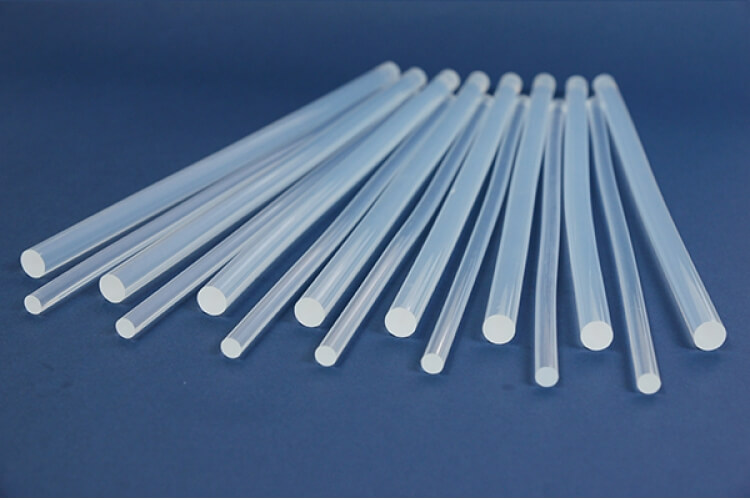Hot melt adhesives are the most widely used industrial hot melt adhesives on the market today. These adhesives are polymer based and are thermoplastic in nature which means they are solid at room temperature. Hot melt adhesives do not use water or solvents, which allows them to have a very fast curing time and an enormous resistance to different temperatures. Today’s post is dedicated entirely to discerning as much information as possible about one particular type of adhesive, namely EVA hot melt, we will pass on a practical guide to its manufacture and what industries it is currently used in.
Contenidos
EVA (ETHYLENE VINYL ACETATE) HOT MELT ADHESIVE
Today there are two main types of industrial hot melt adhesives: ethylene vinyl acetate (EVA) and polyolefin or metallocene. EVA is a copolymer adhesive and its use is mainly focused on industry, because of its composition it is able to adhere easily to a wide variety of materials and has a wide range of formulations. The composition of the adhesive will significantly influence its properties. There are various types of EVA adhesives on the market.
FORMULATION AND COMPOSITION
Ethylene, on the one hand, promotes adhesion to non-polar substrates such as polyethylene and provides mechanical strength, blocking resistance and is soluble in paraffin. Vinyl acetate, on the other hand, promotes adhesion to polar substrates such as paper and provides flexibility, adhesion and improved low temperature performance.
For example, a higher proportion of ethylene in its composition will provide an EVA adhesive with higher strength, while a higher amount of vinyl acetate will provide stronger adhesion to paper products and improve the flexibility of the adhesive. EVA adhesives containing higher amounts of vinyl acetate can also operate at lower temperatures, have improved wettability and also a longer open time and slower set.
PROPERTIES OF EVA
Although EVA adhesives vary in properties depending on their specific formulations, in general, they adhere to the widest range of substrates, operate over one of the widest temperature ranges for hot melt adhesives and are the most affordable. EVA hot melt adhesives generally require an application or melt temperature of 176º and have a wide viscosity range. For the most part, EVA adhesives have a relatively fast set speed. However, it is important to remember that if you are using a formulation with a higher proportion of vinyl acetate the set time will be somewhat longer. EVA adhesives can operate at temperatures between -40º and 80º.
INDUSTRIES AND APPLICATIONS
Due to their versatility, reliability and durability, EVA hot melt adhesives are used in a wide range of industries and with a variety of applications. These industries include labelling, packaging, paper handlers, automotive, assembly, wood, textile, mattress and healthcare, among others. However, perhaps the industry that most frequently uses EVA hot melt adhesives is the packaging industry.
EVA adhesives are specifically formulated to adhere to waxes, paper and other aqueous surfaces. For this reason, they are ideal for use in the packaging industry which deals with a variety of industrial products and applications. These products include carton board, package labelling, carton sealing, paper assembly and converting.
EVA ADHESIVE CONSIDERATIONS
Remember that because EVA hot melt adhesives are specifically formulated for your particular industry or application, there is no single EVA adhesive that is formulated for a wide variety of applications. The main factors that will affect whether your composition is one or the other will be the application techniques that are used, the cure time and the environment in which it is used.
At Indumarsan we offer a wide variety of hot melt adhesives that are prepared for any type of application, attending to the specific needs of each industry. For more information visit our home page and do not hesitate to contact us with any questions you may have.


